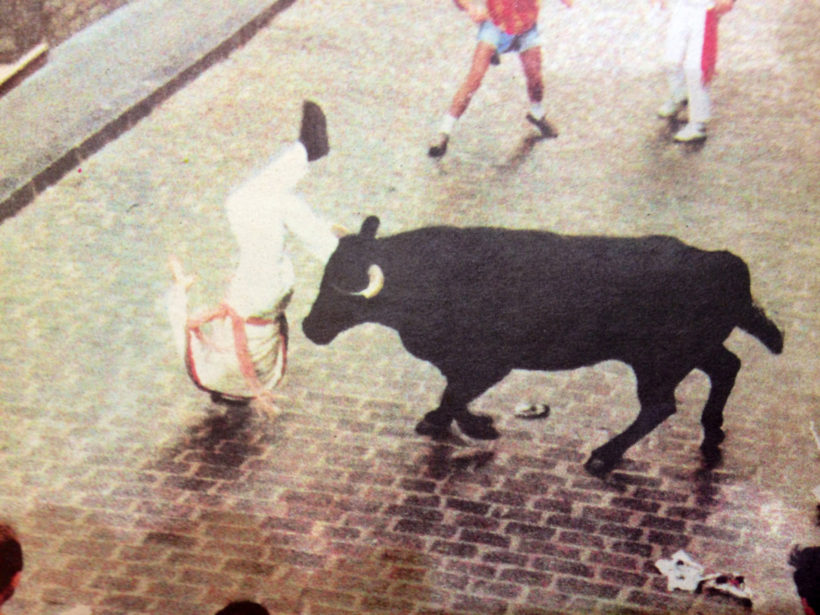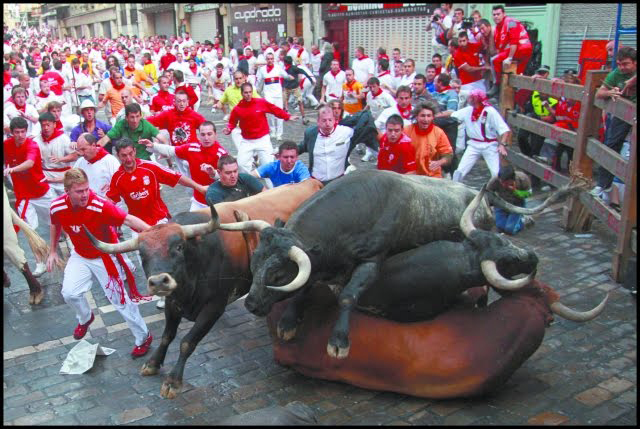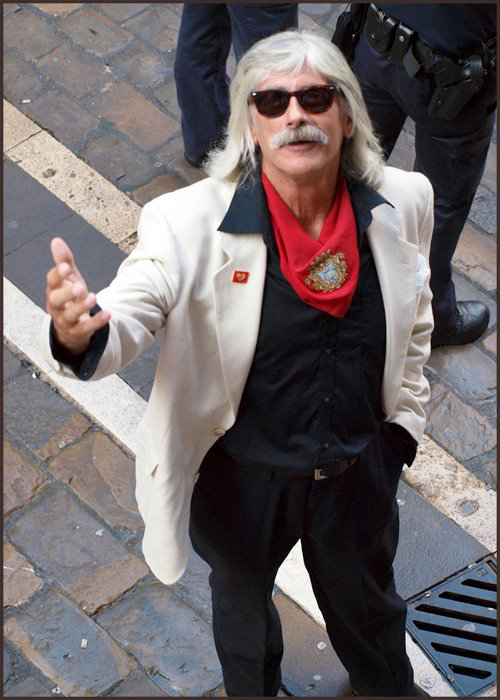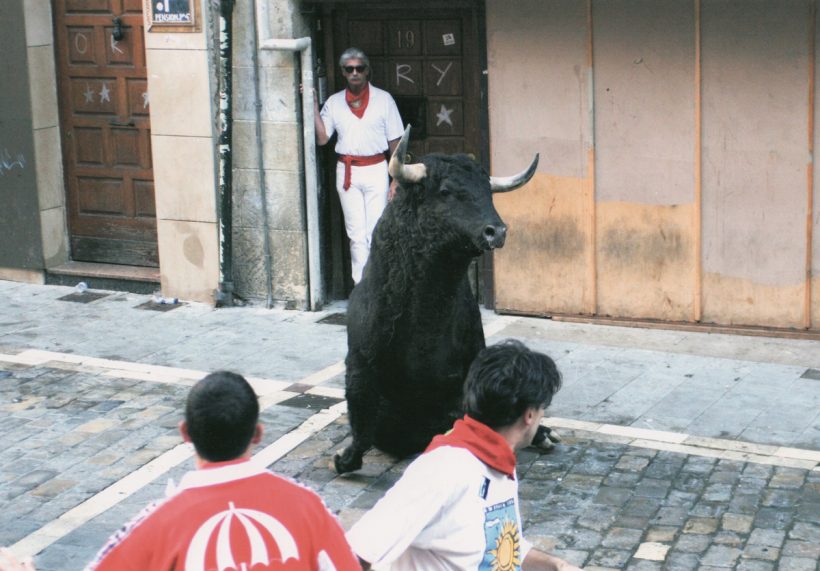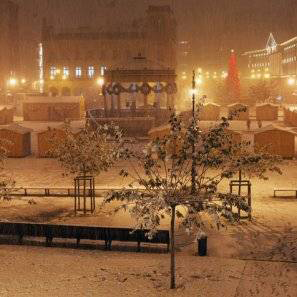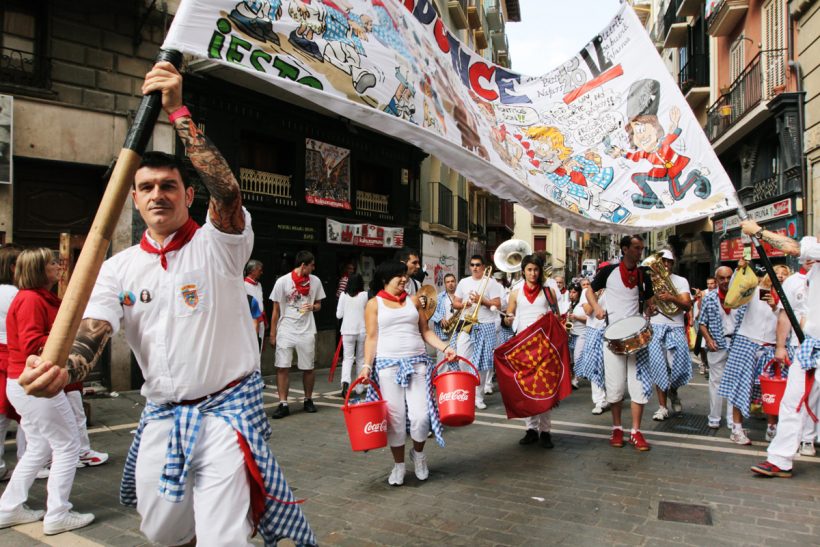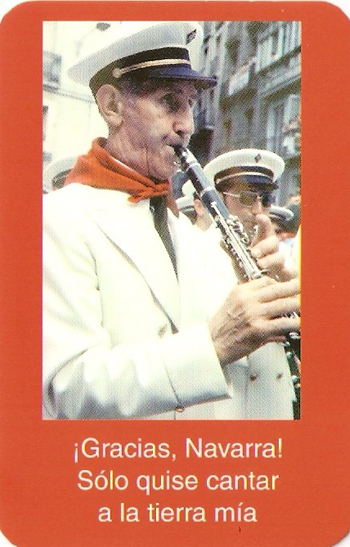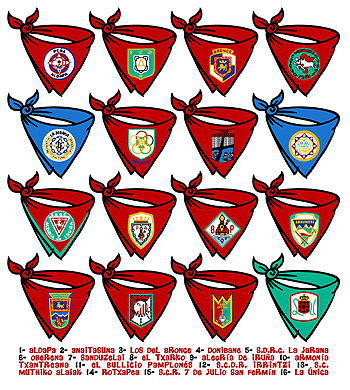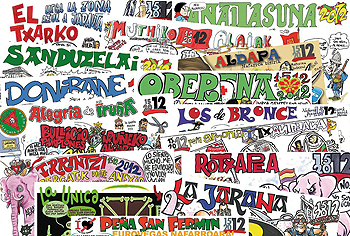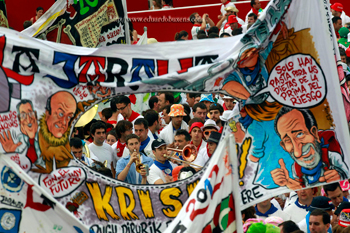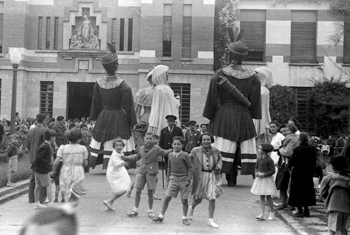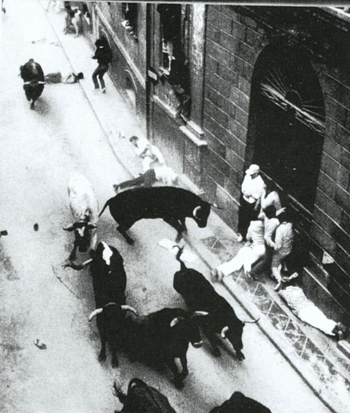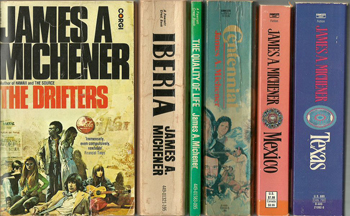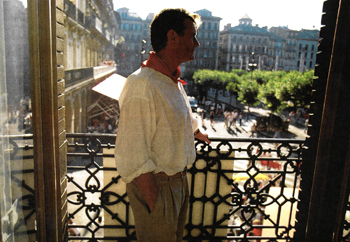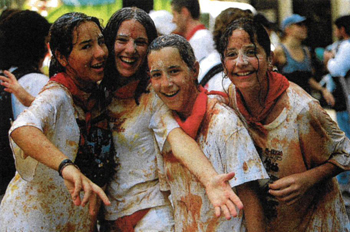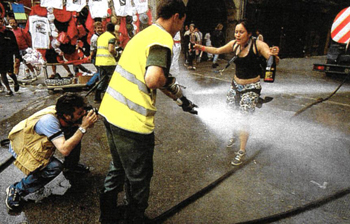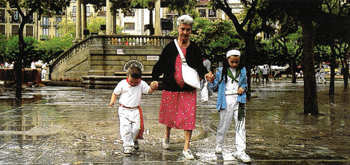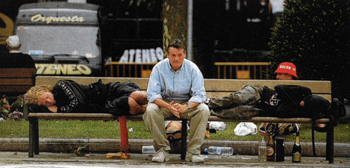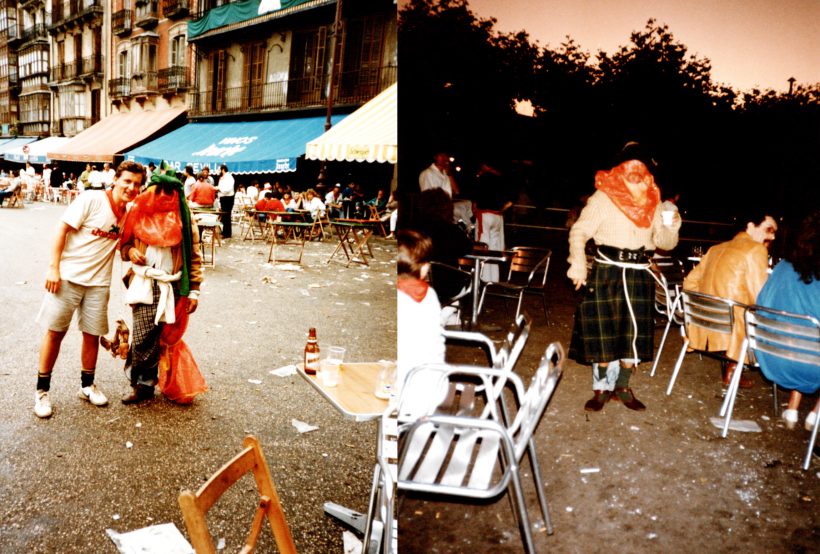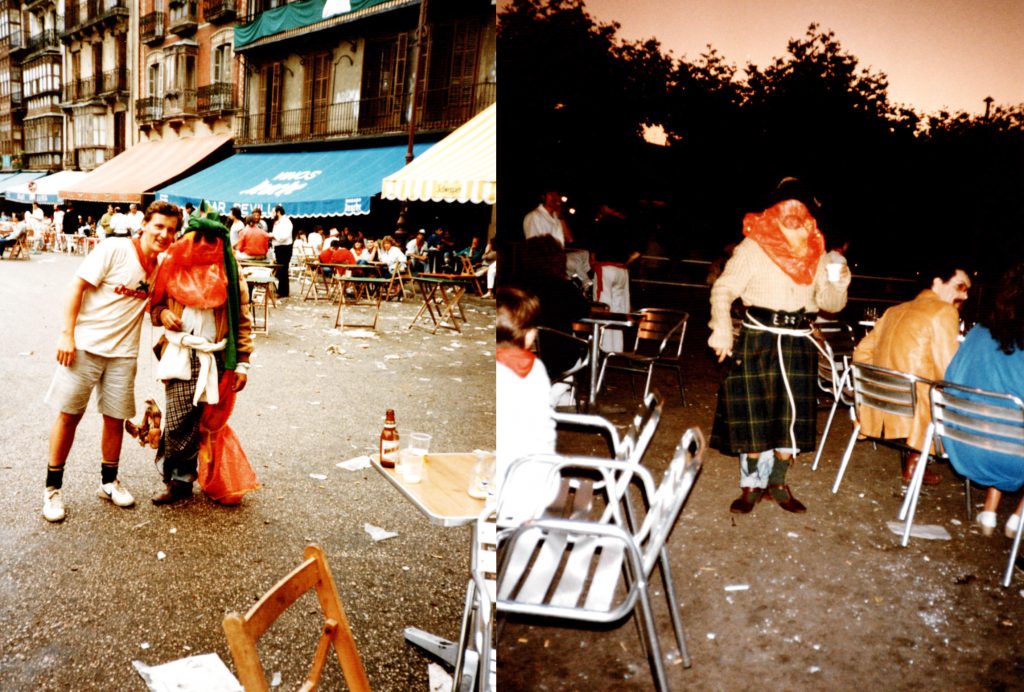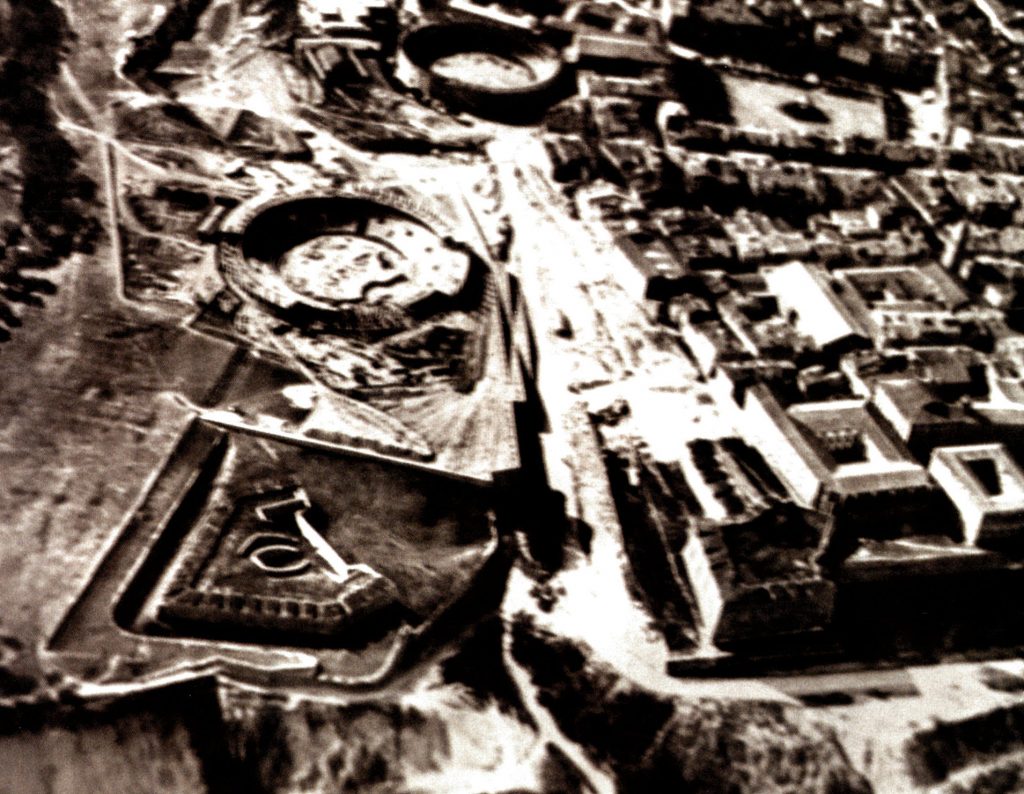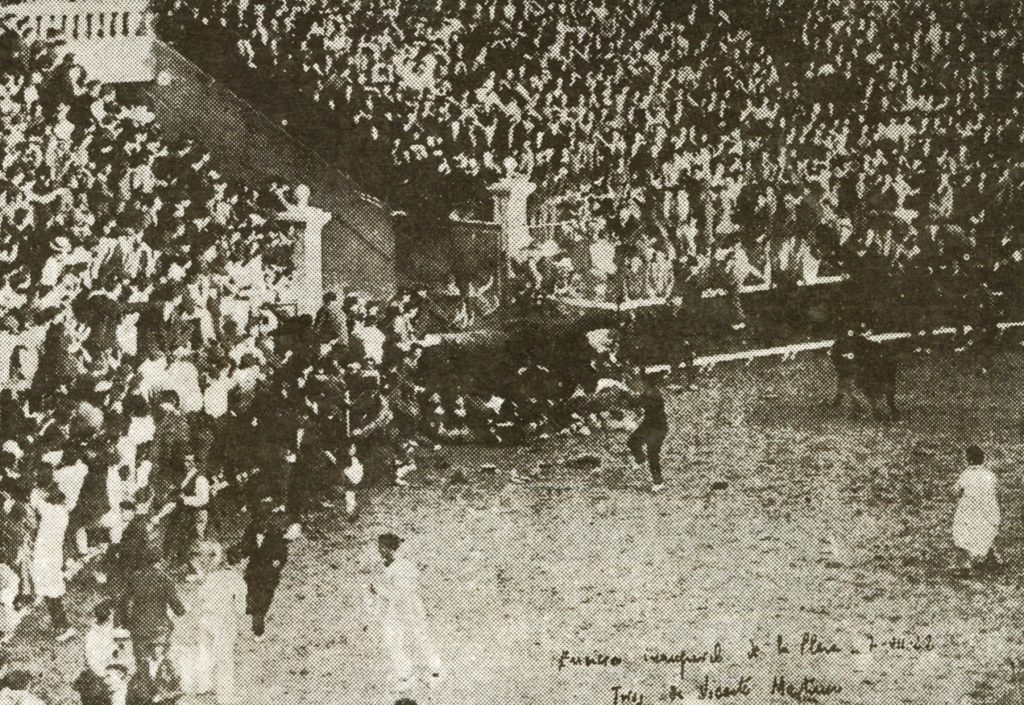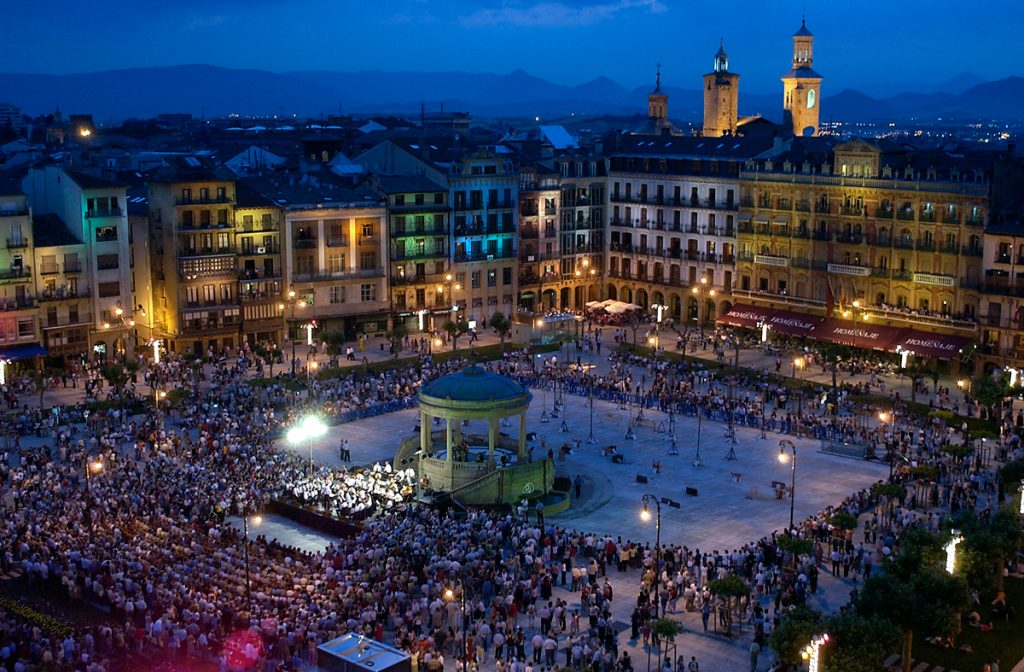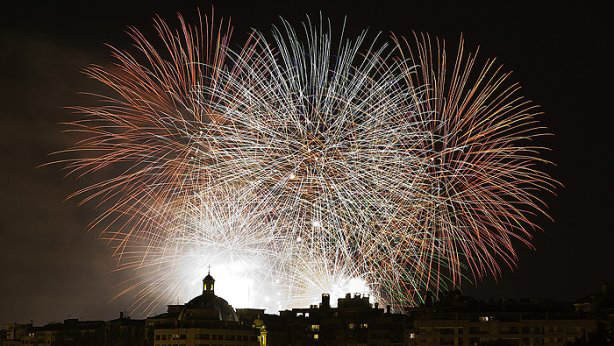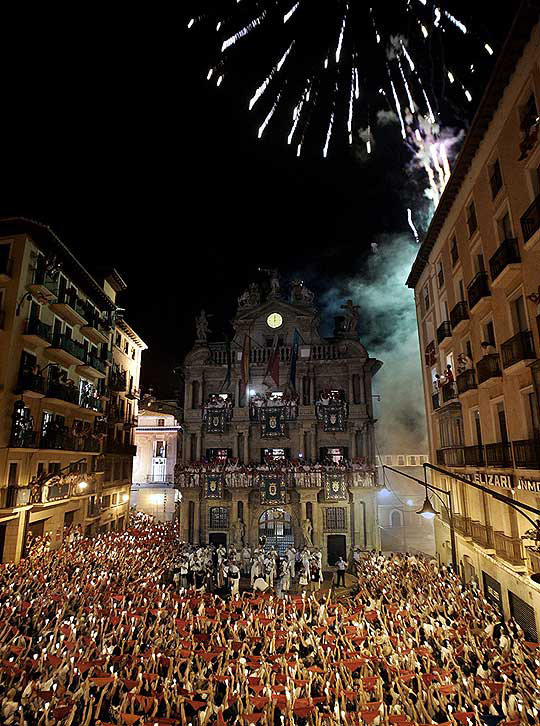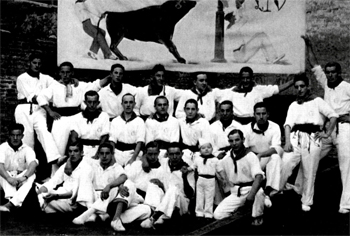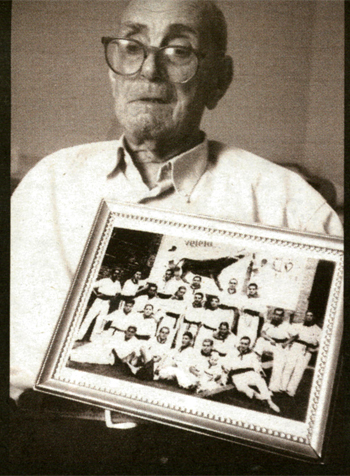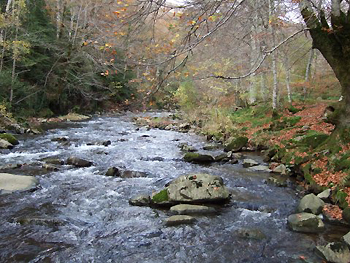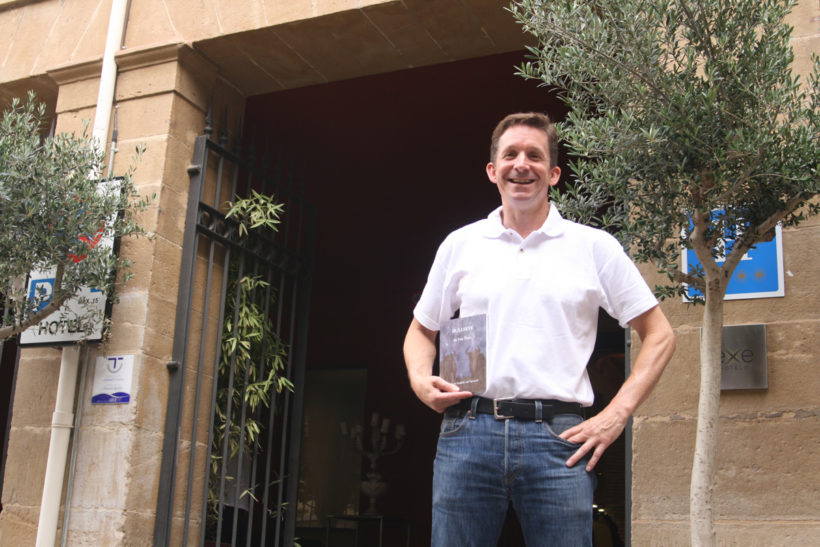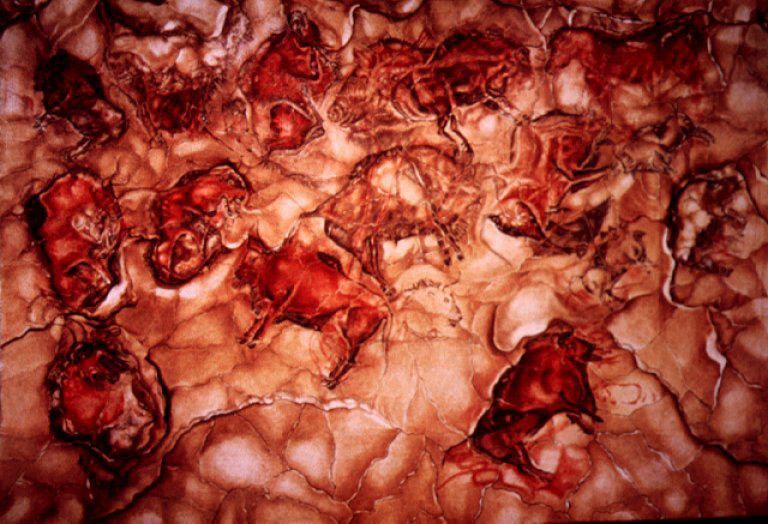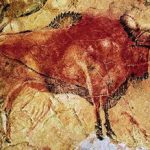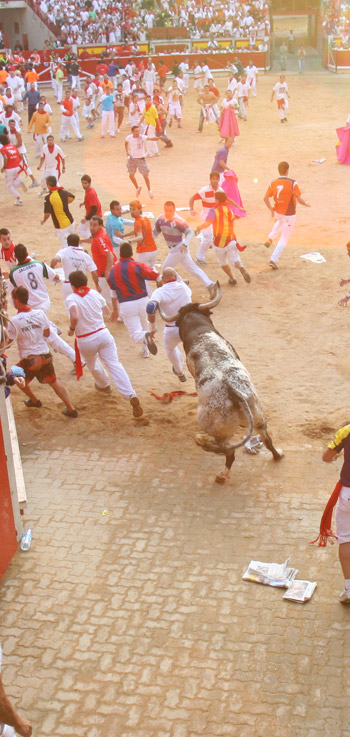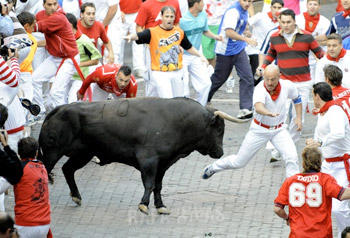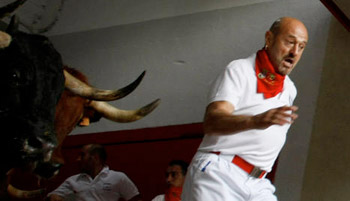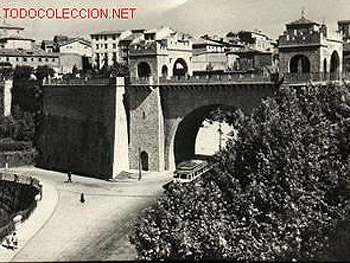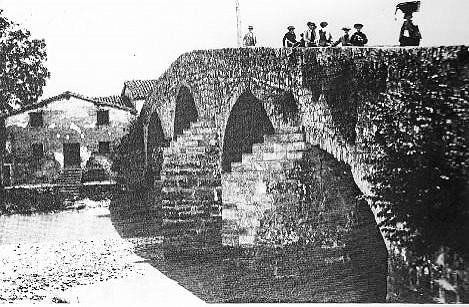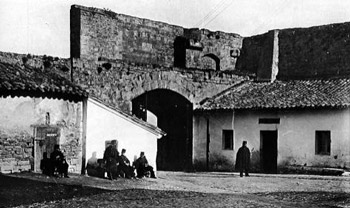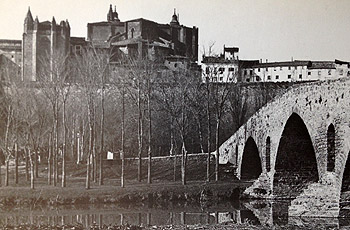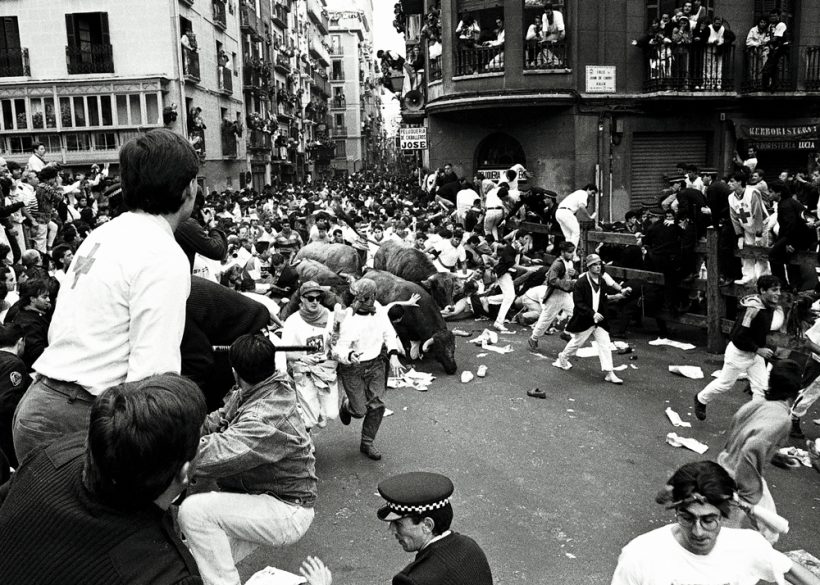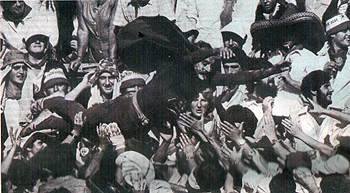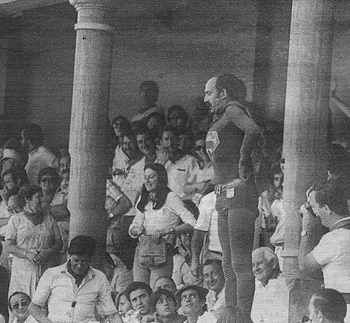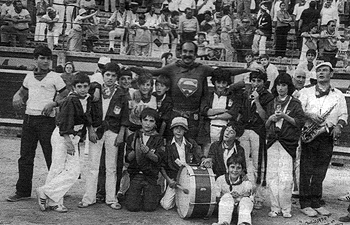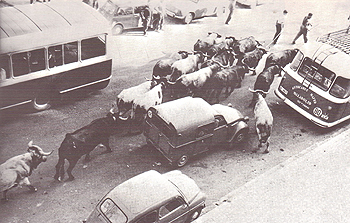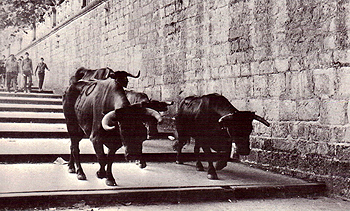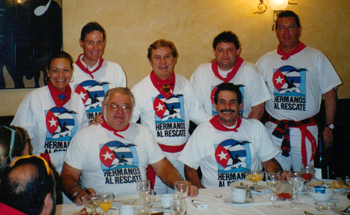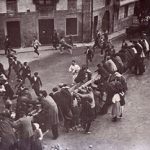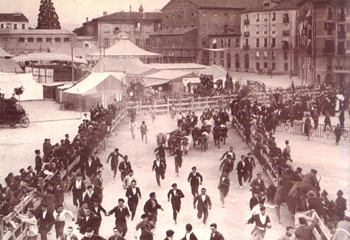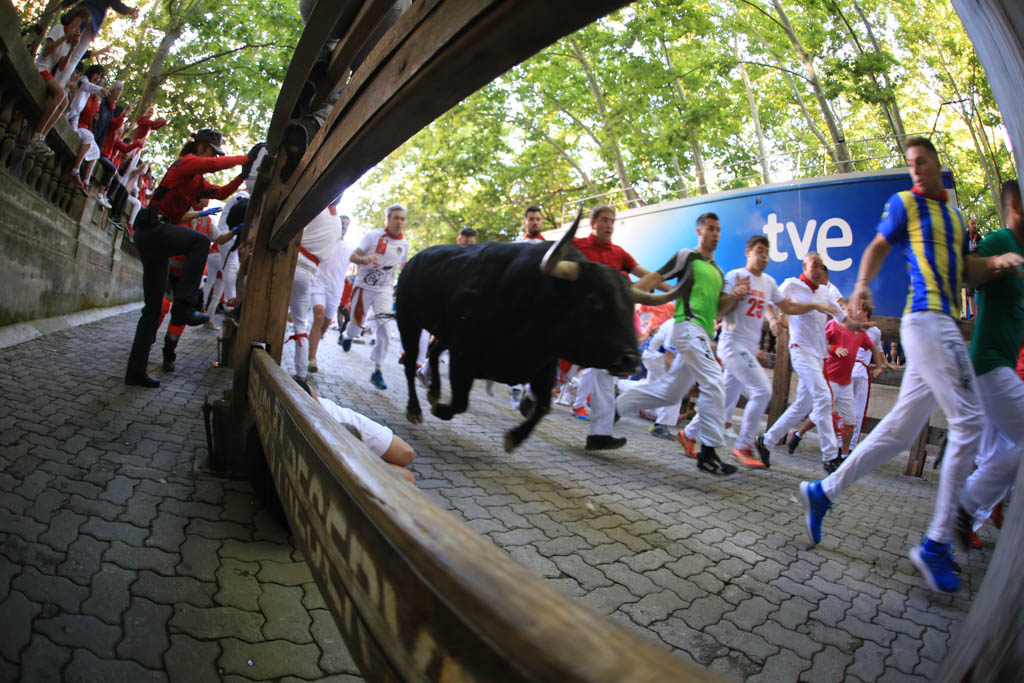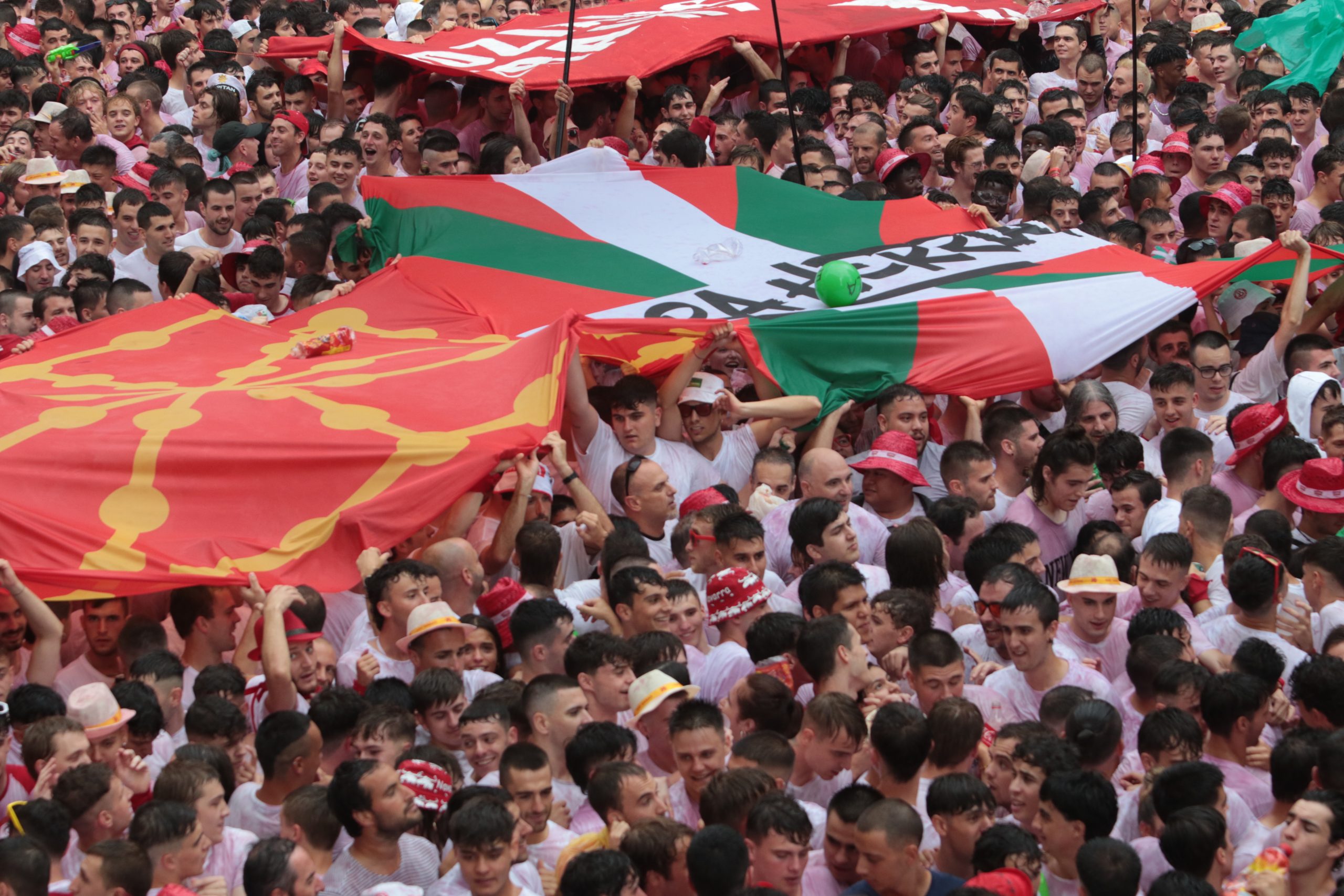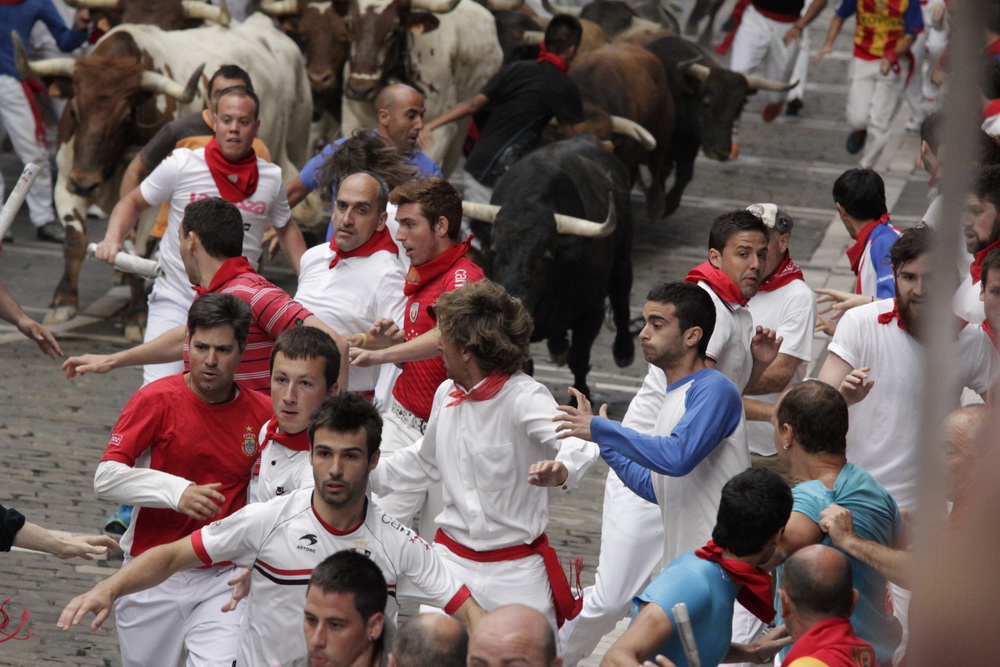A pre article note: As I was writing this month’s piece and putting it together to go to sanfermin.com’s pages, two things happened that have to be mentioned, and that I shall come back to very soon. The first thing was the incredibly sad, and extremely untimely, passing away of the great Bomber, one of the most wonderful foreigners to grace the streets of Pamplona for the last 45 years. His friends know of course, that goes without saying, but as he was a real, true, and bonafide “sanferminero” as the locals say, I thought those who didn’t know him should be able to read about a man that loved the town and all it stood for…and was loved right back by the town and many of it’s inhabitants. So there will be an extra article prontissimo, dedicated to Bomber, because if anyone deserves it, he does.
The other thing to crop up came totally out of the blue and was something I first read just a few days ago thanks to the people at Kukuxumusu who put this website together. I shall write more about it again, but at the end of this month’s literal bull-runnings, under the subtitle “The Bull” you can read the beginning of what I hope will be an ongoing narrative up to, and including, this year’s fiesta. Okay, I’m leaving this month’s writings as it was originally written, so let’s get the virtual corral gates open…
A MIXED PINTXO-PLATTER OF MUSINGS
Yup, for this month I’m offering up another mixed mish-mash of mutterings, indeed a veritable pintxo-platter of Pamplona ponderings. These articles never really get planned, you know, (as you may have noticed from that beginning), I just start writing something down at the top of the page and end up somewhere that’s as much a surprise to me as it may be to you. Usually the bottom of the page… But after last months Clock and Bull Story, which more or less had three courses, almost like a dinner with a starter, a main and a dessert, I thought I’d just dip in and out of various fiesta related things, rather as one might go on a Pamplona pintxo perambulation around the pubs of the old part, or a tapa and tipple trip amongst the taverns of the old town, and see if I couldn’t serve up a smorgasbord of San Fermin related scribbles. Okay, okay, enough of this edible orgy of alliteration. Apologies!
Once upon a time, way back then, when all photos were in black and white and the only colour ones were sepia coloured, (to me the photographic equivalent of those beautiful stained glass windows one finds in a church), a man got his photo taken. Nope, it’s not a very good quality photo, but in it’s ageing and weathered state it transports us back to a very different time in Pamplona ‘s fiesta history. My thanks, as so often, go this month to the Navarran newspapers for my piratical plagiarising plunderings.
Pamplona’s Favourite Uncle
Javier Echeverria, on the right.
In Diario de Noticias “Especial SF 11” supplement of Tuesday 5th July that year, they had a piece about one of those characters that would have no doubt passed us by if the journalist Fernando Huarte hadn’t written about him. He has long since passed away, as he died in 1911, but he played an important part in the fiestas of this town without equal, and he played that part for over 70 years. So yes, we’re going a long way back now…
His name was Javier Echeverria, known to all as Tio Javier, or in English, Uncle Xavier. We don’t have an equivalent English name, as it comes directly from the Basque of its origins, from the meaning of “new house.” But this man provided a direct link between the Comparsa of today, and that of yesteryear. The Comparsa, by the way, are that wonderful troupe of giants, big-headed people and those half-man half-horse creatures that twirl and dance, whack and thwack, and run and have fun around Pamplona during fiesta.
Tio Javier was a gypsy, and no one really knows where he was born, but it was inside Navarra somewhere. They do know just about when though…1811. I told you we were going back a long way. Some time in the 1830’s he appeared in the “old” Comparsa, before the original figures, which had become run down, were replaced in 1860 by the ones still dancing and bringing joy today, hence his being a link , even over a hundred years ago, to what was even then “yesteryear” – a different time and a different century.
Part of the troupe that is the Comparsa, showing the giants, with the African King and Queen in the second row.
He was a “chunchero” or a “chunchunero”, a pipe and drum player, and although the official town hall records only really note the relationships of the musicians to the Comparsa since 1848, there are enough earlier documents that name Javier Echeverria from the early 1830’s as already a municipal chunchero. He was always there, never missing a day, and so it appears that he and the Giants were inseparable.
He was an excellent player by all accounts, and there is even a surviving cutting from the now defunct newspaper The Echo of Navarra, and although there is no exact date on it, it is from July 1900 by a travelling chronicler who goes under the name Un Forastero, (A Stranger, An Outsider), while describing the giants and entourage in the street:
“And there also was that honourable gypsy from Orcoyen, Javier, the same fellow from the last forty years, with the same copper colouring, the same waistcoat, the same chulubit and I believe the same patch on the drum. But the best, the surprise, was when he invited the people to dance the jota along with him, scratching from his own repertoire along with the sound of another chunchunero. Horns of the Devil! What a to- do, what whirling of feet and moving of arms! You should have seen it boss, the figures dancing at his side looked like a picador flying around the arena. And he noticed it, too: they’re going for it! And within seconds everyone was dancing with the giants.”
Another photo of a favourite uncle, and his drum, now in the Municipal Archive of Pamplona
The drum
Whether it was because he was a gypsy and felt a certain affinity with them, who knows, but he always played with the two giants that were the African King and Queen. He just seemed to adopt them.
But time waits for no man (although it waited a long time for him), and there came a point when he couldn’t play any more. In 1908, when he had being playing with the Comparsa for over 70 years, time finally, slowly, caught up with him, and due to an illness he had to retire. Bare in mind though he was in his late nineties by then! That year the town hall, under one Don Daniel Irujo, made a heartfelt tribute to Javier Echeverria, which he received having walked from his village of Linzoian, up in the hills near Burguete, about 25km away. Remember, again, he was in his late nineties, and remember also…it’s a mountainous, bendy route, (I hesitate even to say it was a “road” back then) which took him four days. And then he had to get back again…I tell you, there’s gotta be something in that pacharan…
I’m not sure what happened in 1909, but it seems he at the very least was in town for fiesta, but amazingly, in 1910, he was definitely back. He must have loved those Giants, because at the age of 99 he again walked from his village in north-east Navarra to Pamplona , and again it took him 4 days, proving that nothing would keep him from his cherished Comparsa.
The troupe that makes up the Comparsa, as drawn by Mikel Urmeneta.
But for the first time in his life, at nearly 100 years of age, he found that his hands couldn’t follow the signals from his head…and he couldn’t play. But, even though this was so, it didn’t stop him from being with his friends, both real and make believe. He still brought his pipe and drum with him, and one more time accompanied that magical troupe of figures, walking poignantly and silently alongside them, the zaldikos and kilikis, and the cabuzedos and los gigantes, including, of course, his beloved African King and Queen. It was to be the last time.
At the end of the fiesta the local press, in collaboration with the fair and the cinema people, amongst others, donated a part of their profits to him so that this gypsy, the town’s Uncle Javier, could have a better quality of what remained of his life.
When the fiestas of 1911 began he was in the Hospital Provincial. Where some people might die, as they say, “in full regalia”, well, Javier Echeverria died in full fiesta, on the 11th of July 1911. A local chronicler wrote, and please excuse my translation: “It has been the first year that Echeverria has not been able to be a part of our joy in fiesta, and it’s as if it couldn’t support the weight of his absence, as if the rockets and the music felt in the near distance the pain from his bed, and so fiesta transported his spirit, and Echeverria died at one with the fiesta.”
La Plaza del Castillo
The Plaza del Castillo, as it once was.
Progress happens. It has to. But when it comes to having to reform or renovate old, classic town centres, there is a way of doing it to try and minimise the damage, and to perhaps try and make sure that in an area of ageing beauty, any renovation blends in as much as possible to the existing style.
Only a bloody idiot would think that the “new” Castle Square in Pamplona is an improvement on what there was before. I am not going to get into the politics of the reasons for what was done, or the rights and wrongs of it…even I can understand that if work needed to be done to build a multi-level car park underneath, then something had to happen.
But to take what was a beautiful old square and do what they did to it is a disgrace. Yes, I know they needed to build some above ground constructions at the corners so they could house an entrance to the lifts and stairs to get below, (plus access to disabled toilets – a good thing), but why-oh-why did they have to make them look so glassy and modern, as opposed to building something in material that would match the buildings and feel of the square?
And why couldn’t they have put the railings that surrounded the plaza back, to at least give a bit of definition to the square, if not just to provide a convenient place for people to stop and ponder, to rest and lean against, or to sit on and dangle legs from? As I say, even a bloody idiot…after all, it’s not rocket engineering…ah well. I still live in hope that they’ll put railings back in the square to finish the job.
Officially sanctioned destruction and vandalism of the beautiful square, 2001. From Diario de Navarra, Nagore/Calleja
Merche Galindo. Diario de Noticias.
Twelve years ago, on Monday July 24th, 2001, the vehicles and chainsaws snuck into the plaza at 05.10 a.m in the morning, and began to hack down the trees from three sides of the square. Only those trees on the Bar Txoko to Hotel La Perla side were spared. They came in at that ungodly hour, unannounced, to avoid the confrontations with the locals that they knew would surely happen. There was a riot that day, of course, and I was there with Dutch Shortie when it went off, and one day I’ll write about that too, but this isn’t the place to do it yet.
The next year the plaza was a building site, but by 2003, yup, 10 years ago, the square was finished and ready for fiesta. They had replaced the destroyed trees with new ones, the grass had been replaced and flowers planted…but something was lost. The “square” and the symmetry of it had gone, and I swear some of its spirit had gone too. Yes, buildings and places, if they are loved, have a soul to them, and it’s given to them by us.
It wasn’t the first time the square had been worked on, obviously, as over centuries things change and buildings are knocked down, or modernised…or just built on top of! The last major change to the square before 2001 was in 1931 proving, (at least to me) that even back then they were making a hash of so called “progress.”
The square in 1905.
I think this is a cracking photo. It’s taken from what appears to be above the Café Iruña, perhaps from one of the balconies, and so is a view facing south. At the top left is where the present day Bar Txoko is, then there is the gap where the street Espoz y Mina is, and then we cross to the building that to many of us foreigners will always be called Banco Central, whatever bank is currently occupying it. But look at the middle of the building, and the huge arched central façade, followed by the rest of the building. That glorious central part was the theatre, the Teatro Principal, and with that whole building intact the plaza was perfect, the classic square practically closed on all four sides by beautiful buildings with shaded arcades to walk under.
In the middle of the picture you can see the top of the old drinking fountain, surrounded by a circle of trees. That figure popping up above the tree level is a statue of Mari-Blanca, made by Juan de Perat in 1788 especially for the water fountain that was to be constructed in the square and installed in 1792, during the time that enabled the town authorities to provide various drinking water fountains to the population in that era.
And at the front of the shot is the old wooden bandstand, what they call the kiosk, which between 1900 and 1910 was placed right in front of Cafe Iruña. And that was then…
And this is now…the chupinazo in the plaza, July 6th, 2012.
Today, over a hundred years later, this is what we have. Yes, it’s still a lovely old square of course, and I still get that old thrill whenever I approach it, from whatever entrance, but I will always wish they’d bring the railings back, and I’ll always hope they’ll knock down the modern public entrances to the underground car park and construct something more I keeping with the architecture of the square.
But, back to the past for a little bit longer. In 1910 the wooden kiosk was moved from in front of Café Iruña to the middle of the square, and the old statue of Mari-Blanca was moved to the Plaza de San Fransisco until 1927, when it was moved to it’s present home in Taconera Park, (near the Hotel Tres Reyes) where it resides in peace amongst the gardens.
The central part of the building that contained the theatre was demolished, so opening up the Avenue Carlos 3rd right into the square. The façade was kept though and reconstructed brick by brick for the main entrance of the new theatre around the corner, now the Teatro Gayarre
The old wooden kiosk was replaced by the present stone one in 1943, and it has drinking fountains incorporated into it. Before they constructed the monstrosity of a stage they use now for the nightly concerts during fiesta, that small stone bandstand was where the bands played in the square from midnight to about 3 a.m, and everyone danced in front of it and around it, and in those days my (yes, my!) beautiful square really was the centre of fiesta.
A French painting from 1829, with the title “Combat de Taureaux a Pampelune (Espagne). Showing a bullfight in Pamplona ‘s Plaza del Castillo.
Indeed, if proof were ever needed that the square was always the centre of fiesta, well, that painting above doesn’t lie, as once upon a time, before Pamplona had a bullring, the bulls were run through the streets and into the plaza, where, in common with many other Spanish towns and cities, they were then fought in the central square. But that is most definitely a tale for another day!
The crowd I was with in the first couple of years slept in the square, partied in the square, ate in the square and danced in the square. Post bull run we met up back there. That amazing square really was the pumping, pulsating heart of our first extraordinary years. And, despite what they’ve done to you, my wonderful Plaza del Castillo, you still are.
“The Bulls” – Miura!
The mythical Miura bulls, Pamplona encierro legends, at home in Andalucia. ©Patxi Arrizabalaga. 2010. Torosysanfermines.blogspot.com
The name Miura is famous, and infamous, and central to the history of bullfighting, not just amongst bull runners of course, but in the taurine world as a whole. I have to be careful here, as there are many people out there whose knowledge about the bulls and their world goes way beyond anything I’ll ever know, but I wanted to finish this month’s piece with just a little bit about the bulls, and especially the Miuras and their connection with Navarra.
Although the Miuras (both the bulls and the family!) are from Andalusia , and live on the famous Zahariche ranch, they have a direct and fitting connection to Navarra. If you go to the official Miura website, one of the first things you’ll come across is on the very first page, under “Origins and History” where the direct literal associations between the word “miura” and its Basque and Navarran variants are obvious.
A mighty Miura, “Ermitaño” 12th July 2009. © José Antonio Pérez. 12 de julio de 2009.
Amongst the Euskera (Basque) words, and the variations thereof pertaining to the origins of the word “miura” and the bulls, you’ll find the words “mihura, miura, migura and mura”, along with documentation linking them to Urdax (1726), Pamplona, (1773) and Zugarramurdi (1635 and 1659). And my favourite bit is that it’s believed that the word “mihura” is from the Basque word for, in Spanish, “muerdago.” Which in English means “mistletoe” which for some reason I really rather like.
The Miura bulls come from various stock then, including as mentioned Navarra. Way back in 1879 the bullfighter Rafael “El Lagartijo” Molina Sanchez fought a Navarran bull called “Murcielago” in Cordoba . This bull survived 24 jabs and stabs from the picador and fought with such passion and spirit that this brave animal was saved, and so became what in the bullfight world is called an “indulto” – a pardoned bull.
Ermitaño again. If you were in any doubt…bull running can be bloody, dangerous and deadly. ©José Antonio Pérez
El Lagartijo, who was a friend of the Miura family, gave this animal as a present to his friend Antonio Miura, and the family sired him into the line of their own bulls, and the rest, as they say, is history. It’s said, according to last year’s “Sanfermines 204 horas de fiesta” magazine, that “thanks to this animal, some Miura bulls can still be seen to share certain characteristics with Navarrese bulls: bright red hides, short, upright horns, and red “birds eye” markings.”
And now, from the bulls, those beautiful and noble animals, to something I had absolutely no idea I’d be writing about until a couple of days ago.
“The Bull.”
Sergeant Gareth Thursby friends.
On September 15th last year, at a place called Checkpoint Tora in the Afghan province of Helmand , a young man died, a long, long way from home. This July, a little bit closer to home, but still in a foreign land in a place called Pamplona , in the Spanish province of Navarra , he will be remembered, and honoured, and commemorated by some of his colleagues.
He was Sergeant Gareth Thursby, of the 3rd Battalion The Yorkshire Regiment, and he died aged 29… just 6 days short of his 30th birthday. Another even younger man died that day in the same incident, Private Thomas Wroe. I say even younger, because he was still a teenager at 18. Just a lad, really.
But it is to the friends and colleagues of Sgt. Gareth Thursby that I return, because thanks to this website and the boys of Kukuxumusu and a news item they posted last week, I learnt all about this. What does this have to do with Pamplona , San Fermin and the running of the bulls?
Well, as the link explained, his friends and colleagues have decided to honour him by running with the bulls, purely, it seems, because of the fact that his nickname was “The Bull.”
sanfermin.com 27/02/2013. 9 English soldiers will come to the Sanfermin Running of the Bulls to gather funds for the families of fallen comrades
sanfermin.com 27/02/2013. 9 English soldiers will come to the Sanfermin Running of the Bulls to gather funds for the families of fallen comrades
On the 15th of September, 2012 a sergeant by the name of Gareth Thursby died in action in Afghanistan. To some of his friends and comrades he was fondly known as the “The Bull” and now these same friends want to come to take part in The Running of the Bulls during the Sanfermin fiestas of 2013 in order to pay homage to their dead comrade and to gather funds for families of other dead comrades
This year we will see some special participants in the Sanfermin Running of the Bulls. Nine soldiers from the British army who belong to the Third Battalion of the Yorkshire Regiment will take part in the running of the bulls in memory of their fallen comrade, Gareth Thursby, who was killed in Afghanistan. Sergeant Thursby lost his life on the 15th of September, 2012 and he leaves a wife and two children. Thanks to the social networks, we have learnt from one of his colleagues, CorporalMathew Pritchard, about the initiative which he and some other soldiers have taken to start a campaign to collect funds in memory of the fallen soldier for the ABF The Soldiers Charity. This organization exists to help the families of soldiers who have died in action. They aim to collect a total of 23.000 euros and they have already reached the figure of 6000 euros through the web page: justgiving.com/3YorksBullRun
Sergeant Gareth Thursby was fondly known to his comrades as “The Bull” and it was thanks to this nickname that the idea arose to take part in the running of the bulls in Pamplona and to collect funds for the families of fallen soldiers at the same time. For the moment, some nine soldiers have agreed to come and they are already in training for the event. They hope to come to Pamplona on the 5th of July and to take part in the first Sanfermin running of the bulls on the 7th of July at 8.00 a.m. They have formed a group in Facebook (3yorksbullrun) and an account in twitter (@3yorksbullrun) where they are continually updating their plans for this commendable project.
At his funeral they provided a wreath in the shape of a bulls head, and when they run this July they shall be wearing t-shirts with their friend’s face on it. And also, and best of all from my point of view, they are also doing this to raise money for the Army Benevolent Fund, and are hoping to raise 23,000 euros.
I said at the beginning of this article that when I write these things I never know quite where they are going to end up, and never is this truer than in this case. I shall try and keep you informed and updated on their progress as we get closer and closer to fiesta, but until then I shall leave you with these quotes about him.
The Bull Run Team out on patrol. A long way from home…
The Bull Run Team out on patrol. A long way from home…
The first is from his wife. He was married to Louise, and had two children, Joshua and Ruby: “Gareth was the love of my life. He was an amazing husband and father, full of life and kind hearted, with a passion for his work and his family. He was brave, hardworking, a loving husband who was a devoted father to his children. Our hero.”
And amongst what his commanding officer, Lieutenant Colonel Zachary Stenning, MBE, said, was this: “We have lost one of our finest, Sergeant Gareth Thursby. His nickname “Bull” epitomised everything: he was strong, confident and incredibly robust. He was admired and deeply respected by his soldiers and peers for his soldiering skills, physical strength and forthright honesty. Utterly professional, his standards were legendary.”
And it is to the legendary and world famous town of Pamplona that his friends will come to honour him. Pamplona, this town that so many of us love so much, will no doubt do him, and them, proud.
Ya falta menos…
As I finish this updated piece it is March the 3rd, one of the Escalera Days, and in the month since the last one on February the 2nd, a month during which as mentioned above Pamplona has lost one of it’s amazing foreign friends, the irreplaceable Bomber, (again, more of whom very soon), we have heard about someone else who never even knew the place, but who will be here in spirit this July, thanks to his friends. With that, for the moment, I think there is nothing more to say.
There will be no video this month, it doesn’t seem appropriate, but, as always, and more poignantly than ever…ya falta menos…

